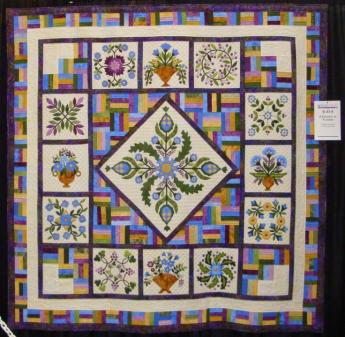Related Topics
Art in Philadelphia
The history of art, particularly painting and sculpture, has been a long and distinguished one. If you add in the art schools, the Philadelphia national influence on artists has been a dominant one.
Historical Preservation
The 20% federal tax credit for historic preservation is said to have been the special pet of Senator Lugar of Indiana. Much of the recent transformation of Philadelphia's downtown is attributed to this incentive.
Customs, Culture and Traditions
Abundant seafood made it easy to settle here. Agriculture takes longer.
Montgomery and Bucks Counties
The Philadelphia metropolitan region has five Pennsylvania counties, four New Jersey counties, one northern county in the state of Delaware. Here are the four Pennsylvania suburban ones.
Quilts, Patchwork Style
 Although quilting can be found in the tombs of ancient Egypt, American farm women are correct that they invented an art form. 
|
| Dr. Fisher |
In the days when transport was primitive, art forms were invented in many places at once, mostly responding to new materials and new technologies. It's irrelevant to the genius of creation, for archivists to pounce on evidence that an art form surfaced a decade or two earlier in one place than another. Creative art could easily have been -- and often was -- invented by five or six people in different regions, each with a just claim to inventing without copying. In the case of quilts, there is a semantic wrinkle, too. If you define quilting as the process of anchoring three layers of cloth together with stitches, then quilts have been found in ruins of ancient China and ancient Egypt. The underlying principle was that three layers of cloth were warmer and stronger than single sheets of cloth or animal skins, so quilting was used for shoes, pants, jackets, and underneath suits of armor. Mary Queen of Scots spent a lot of time in confinement, and examples still survive of tapestries she made with the quilting process. None of this is what American farm women mean when they say that "quilts" are an American invention, and a new art form.

|
| Quilt, Patchwork Style |
What they mean is patchwork-quilting of bedspreads or counterpanes. To make that specific kind of quilt, you pretty much have to wait for the industrial revolution to provide decorated cotton cloth, then for it to become cheap enough to be used as sacks for flour. That attracts frugal farm wives salvaging material for dresses and shirts, and later re-salvaging pieces of it for patches. Somewhere the idea caught on that decoration was needed for the tops of beds; if these ornaments were usable for extra warmth it was even better. And so, we got patchwork counterpane quilts, incorporating different colored patches into designs. They start appearing around 1750 but gained real popularity around 1830. Since no one was keeping records, it's hard to know if the common diamond design was an outgrowth of the Scotch-Irish street "diamond", or an outgrowth of the hex signs which are commonly believed to have originated in the monastery in Germantown. The path of westward migration would have carried such traditions to the rest of the country, so this analysis has some plausibility. However, the ideas are so simple it would surely be impossible to trace them. What is so unique about this folk art is that the design can be oriented around a piece of a favorite grandparent's shirt or dress, evoking that person's presence and personality in a manner largely incomprehensible to anyone except the immediate family. This intimate quality is easily lost, even in third and later generations of the family, although family traditions can be maintained in the designs and by hearsay.
There may be other traditions of folk art evoking a particular individual who is unrecognizable to outsiders. They might admire features of the design but have no way of knowing the personality of the person celebrated, or making associations with the piece of cloth. But this quilt art becomes established as a family heirloom as almost nothing else could be. Its sweetness is oblivious to the fashion police who contribute a rather aggressive undertone to so much of the art world. For example, in the period between the first World War and the Korean War, it was just about impossible to have a non-modernist painting accepted for a juried show. The same juries who enforced such competitive dictates seemed to forget they denounced the "conservative" academics who excluded impressionist painting a century earlier. During the modernist period, disk jockeys and band leaders likewise serially enforced the various fashions of jazz music; classical music was totally banished. Book reviewers, now a dwindling race, similarly laid down standards of obedience for authors and playwrights on behalf of a style now commonly praised as "liberal". Publishers and producers defied such dictates at their peril, and now must reorient to the coming new standard, called post-modernism.
By contrast, the isolated troubadours of home quilting artistry continue to create as they please, primarily speaking to their families and selling a few less treasured products -- to uncomprehending strangers.
Originally published: Thursday, October 04, 2007; most-recently modified: Monday, June 03, 2019